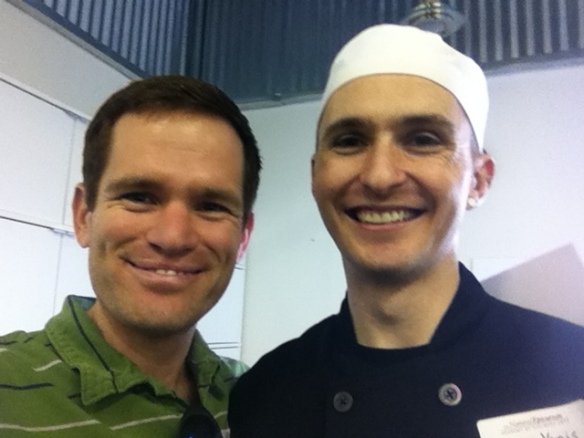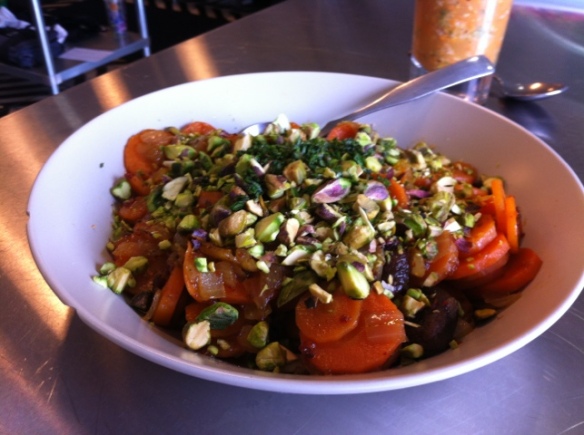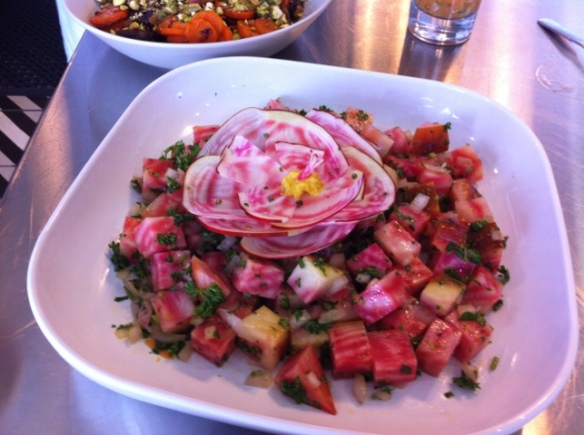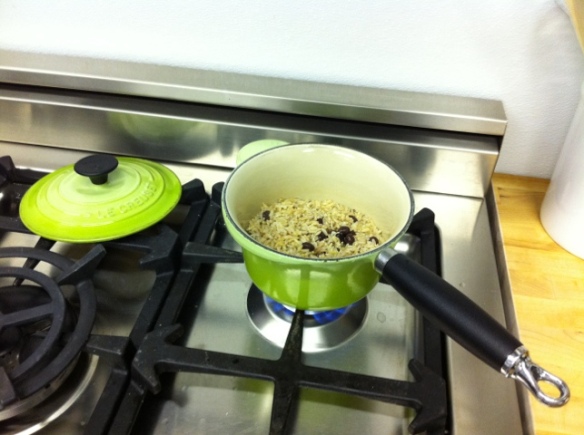I went to The Natural Epicurean for an open house event on January 7th. This was my second such event as an incoming student (I blogged about the last open house). Even though I already know what I’m getting into, I’m the type of person who learns from being present, from interacting, and from doing. So any chance I get to visit the school and meet new people, the better. It’s all part of opening my mind to this new experience and planning to get the most from it.
Waste Not, Want Not
The open house started with a brief talk by two of the program’s students on the topic of preserving food that would otherwise have been wasted.
Below: A recent Natural Epicurean graduate talks about the food preservation process. She’s backed by (L to R) David McIntyre and Maya Farnsworth, the Managing Directors of the Austin and Portland locations, and Ken Rubin, the new Vice President of the school.

As it turns out, there is a significant amount of food waste in our food supply Farms waste food by not harvesting all of it or not selling produce that is not ripe enough or that isn’t visually appealing enough. The same happens in grocery stores — a significant amount of food is thrown out because it doesn’t sell or the grocer decides that it isn’t sellable. Restaurants discard food that isn’t eaten and restaurant patrons toss out uneaten “doggie bags.” And finally, as consumers we waste food when we overbuy food that spoils before we can eat it all.
The students shared their experience working with Green Gate Farms in preserving what’s called the “gleaning,” or the excess or undesirable food from harvest. It sounded like a great way to make the produce useful instead of throwing it out.
Insight into Career Change
Being open to the possibilities of a new career was my big takeaway from this open house. I met Ken Rubin, the new Vice President of the school, who is a long-time culinary educator and is helping to expand the school into a national operation. He talked to me about learning by trying new things, and going after the information that I want. He also said you can never know where your life will end up in the future – you just have to stay true to yourself and keep seeking.
Below: Jeanine Jacobs, an admissions rep for the school, talks about the program courses and requirements.

Next, I spoke to Craig Vanis, the head chef at Veggytopia, an Austin vegan meal prep service. He talked about his career path and the opportunities that exist for natural foods chefs who merely seek them out. He talked about pursuing work opportunities that I’m passionate about, letting my intrinsic desire motivate me, and being pushy when I need to be.
The Universe Provides – If You Help It
It is clear, quitting my job and sitting passively during culinary school classes is not enough. I have to actively seek information from my instructors and seek out culinary experiences. And then it becomes a lifelong learning process.
It struck a chord with me that the universe will give me what I need, if I just ask and open my mind. It seems to me that a lot of success is knowing yourself and letting your natural passions show without shame. I’ve struggled a lot with showing my true self and going after what I want in all situations – breaking through that in a genuine way is going to be instrumental in my success.
Below: Me with Craig Vanis, head chef of Veggytopia, a new vegan food preparation service in Austin.

Below: I bought a book from Christy Morgan, a school graduate.





















